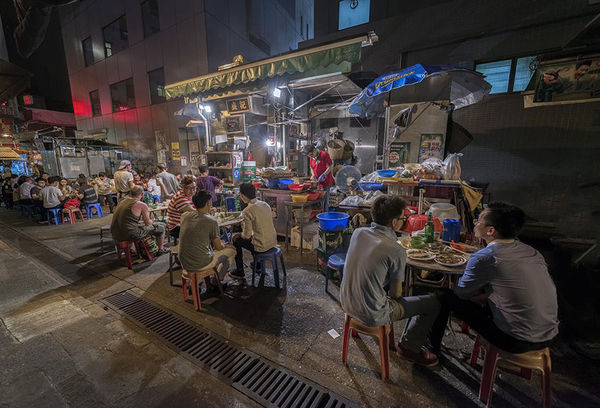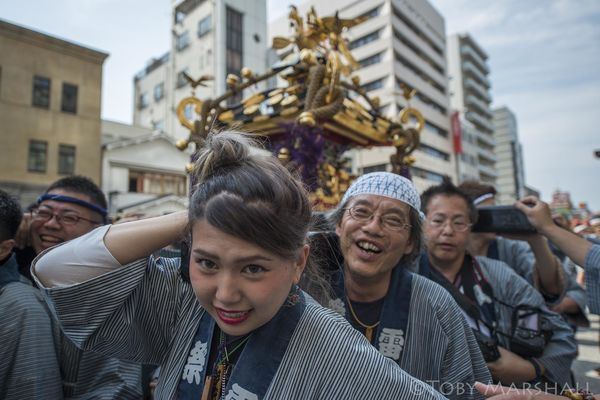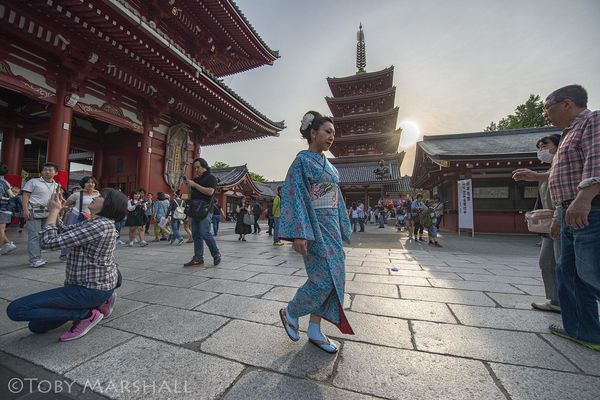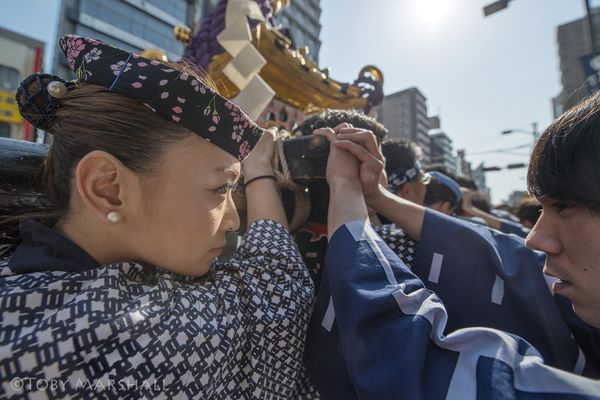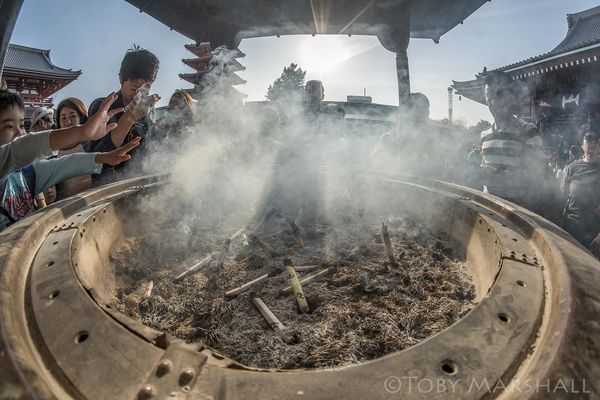The advantage of having good dynamic range
Jun 10, 2016 22:08:32 #
Jun 10, 2016 22:26:21 #
Gene51 wrote:
That would not be an error - it would be a deliberate action on your part to capture everything you need to get a great image - IMHO . . .
Thank you.
Jun 11, 2016 00:26:59 #
I sometimes err on the side of underexposure as "highlight insurance". Modern in-camera meters are pretty good but they can still easily be fooled if highlights are bright and small and there are lots of dark areas in a frame. When I'm shooting grab shots with no chance of careful metering I will often set my cameras (especially the Sony RX100-4) to -1 or -1.3EV. I'd much rather have a bit of noise in shadows than blown highlights.
Jun 11, 2016 04:12:47 #
kymarto wrote:
I'm just going through a bunch of photos for my we... (show quote)
Thanks for the information. As for me I prefer the second photograph. To me the second photograph has more drama than the first, something to be expected at night in Hong Kong. Also, I think that the blown out highlights of the three lights in the middle just adds to that drama.
Jun 11, 2016 06:38:52 #
I absolutely love this shot - the subject matter, scene, and the illustration-like processing into an almost surreal presentation. Excellent work all - round, and thank you for the informative discussion. This photograph evokes the same appreciation of common folk in a common social setting engaged in commonplace activity as my favorite painting, Renoir's Luncheon of the Boating Party, a common print of which hangs on a prominent wall in my condo. Thanks for this artistic treat.
Jun 11, 2016 08:32:43 #
I've been reading lately about the ISO invariance of the Nikon D500. In tests, they had one normally exposed shot and one that was underexposed by -5 EV. They brought the -5 EV shot up to the same exposure as the normally exposed shot and noticed that it was just as clean with no additional noise. It might be that your D800 is also ISO invariant. I recently bought a D500 but I haven't tried that test yet. I've been impressed with its dynamic range.
Jun 11, 2016 08:32:52 #
kymarto wrote:
No one would argue against your conclusion that a higher DR is advantageous, your other conclusions,,, not so much.I'm just going through a bunch of photos for my we... (show quote)
When you refer to the "normally exposed" frame, that frame is simply the one the camera meter sees as "normal" but we all know that meters are only a guide and can be "wrong" depending on personal preference. It seems that your preference for this image is to retain more detail in the highlights at the expense of more noise in the shadow areas; nothing wrong with that but others may take an opposing view. What that comes down to is that when the DR of the image exceeds that of the camera sensor, the photographer has to make a choice.
I've noticed a trend in recent threads to advocate underexposure as being a good thing. This is quite wrong and I dare say some would say a criminal waste of the increased DR provided by the better Sensors.
Jun 11, 2016 08:49:42 #
lukan
Loc: Chicago, IL
Love the tweaked shot. Nice "evolution" of a very smartly composed and exposed street scene. Really interesting visuals.
Jun 11, 2016 10:05:59 #
kymarto wrote:
How about this then? Easy tweak with the adjustment brush in ACR. I did not want to do local adjustments in the direct comparison, and I understand what you mean. I increased the contrast, did a bit of exposure and highlight adjustment and changed the black level (maybe even a bit too much). Then a slight cooling of the color balance.
I like the lower photo it has more pop! Very good thanks for posting kymarto and Hong Kong is a wonderful place to make interesting photographs!
Jun 11, 2016 10:09:48 #
kymarto wrote:
How about this then? Easy tweak with the adjustment brush in ACR. I did not want to do local adjustments in the direct comparison, and I understand what you mean. I increased the contrast, did a bit of exposure and highlight adjustment and changed the black level (maybe even a bit too much). Then a slight cooling of the color balance.
I prefer image number two --- it has just the right amount of contrast in my opinion. Every image really needs a good black point and white point and I feel you adjusted this one optimally, so that the image "pops". I also feel that the overall tone, color, saturation and sharpness are perfect too. Well done.



Jun 11, 2016 11:05:58 #
It is undeniable that a camera with a good dynamic range is a plus. I am with Clint, the second image of your originals do not look that bad to me and in Photoshop those highlights can be toned down to taste.
Your first image does look much better in your second version.
I like the HDR treatment for some images but I agree with you that this one was not a good one for that so what you decided to do you did well.
By the way, I would clone the gentleman on the extreme right of the frame and the tarp on the upper left if this was my image. Makes this great shot look better.
Your first image does look much better in your second version.
I like the HDR treatment for some images but I agree with you that this one was not a good one for that so what you decided to do you did well.
By the way, I would clone the gentleman on the extreme right of the frame and the tarp on the upper left if this was my image. Makes this great shot look better.
Jun 11, 2016 12:27:57 #
my understanding of HDR is you take three to five exposures using your exposure compensation dial or by bracketing without changing the aperture or composition or the ISOs and the different exposures being(1) metered image by the camera(2) EV +1(3)EV-1(4)EV+2(5)EV-2.you can either merge three images or all the five images either in photoshop or lightroomcc or photomatixpro or AuroraHDR.you must remember photomatix and AuroraHDR does tonemaping as well besides HDR and i do not know about photoshop or lightroomcc.my understanding of HDR is that it brings out the details both in highlights and in shadows.hope i understand your statement as you intended,joseph
Jun 11, 2016 12:48:51 #
Jun 11, 2016 13:03:33 #
Thank you for this post and for the comments. This type of article is what I look for in UHH.
Jun 11, 2016 13:34:11 #
Peekayoh wrote:
No one would argue against your conclusion that a ... (show quote)
If some folks want to lose highlights in preference to somewhat noisy shadows that is certainly their prerogative; however it seems rather counterintuitive to me. Consider that at best one can recover 1.5 EV of clipped highlights, while with a good sensor, it is possible to bring up shadows at least 3EV with minimal added noise in the shadows.
I certainly do not advocate underexposure as an optimal practice for image quality, but the fact is that meters often ignore highlights. In many situations I make it a standard practice to underexpose by 1 EV, or more if I find on review that highlights are still being clipped. I have lost too many one-chance shots to blown highlights to worry too much about a bit of extra noise in the shadows.
To be clear, this is usually in situations of extreme dynamic range, especially shooting against the light, or if I want to preserve a sunny sky while my subject is in shadow. If I am shooting a normal front lit scene I do not underexpose.
Here are a couple of examples of a recent festival in Japan in which underexposure (or let us more accurately say "exposure compensation") saved the day from wonky meter readings.
If you want to reply, then register here. Registration is free and your account is created instantly, so you can post right away.








